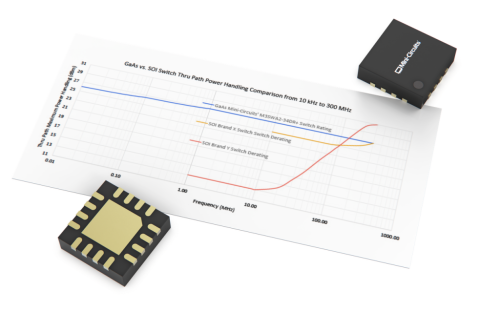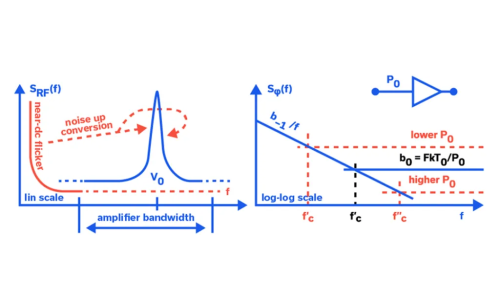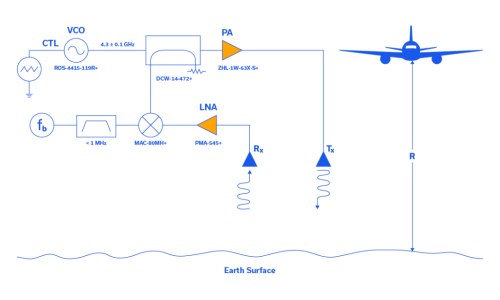Using LTCC Thru-Lines as Filter Placeholders
Standard Footprint Sizes Allow Drop-In Replacement with Thousands of LTCC Filter Models
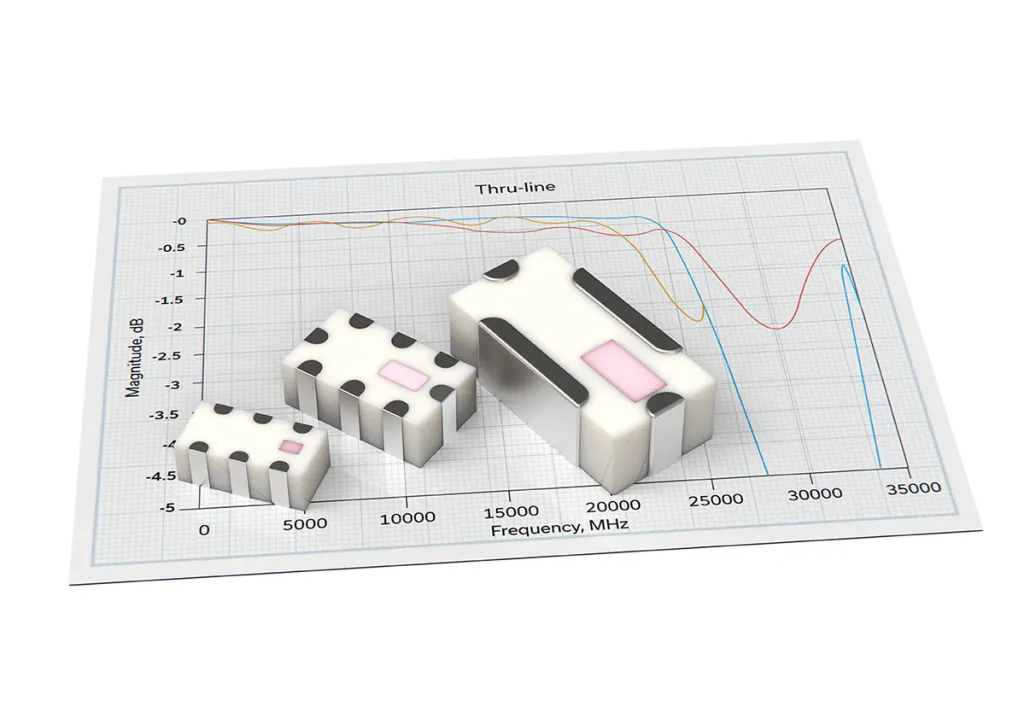
Experienced engineers often take some creative license inserting filters into component cascades to filter out a myriad of undesired signals. For example, mixer spurs at the IF port can be complex, and it’s difficult to predict the net effect of the IF filter on these undesired signals. Often, engineers will first examine the raw, unfiltered mixer spurs in detail as a test to choose the appropriate IF filter. The savviest of these engineers understand the importance of having thru lines in their repertoire with standard footprints to serve as placeholders for filters they may choose to add to the signal chain later in the design process. Sometimes, PC board footprints for filters are added as risk mitigation. In cases where no filtering is ultimately required, thru lines are inserted into these slots to stay.
Mini-Circuits has developed three LTCC thru lines that are compatible with the most common LTCC filter footprints (0603, 0805 and 1206) and that achieve excellent frequency response to 20 GHz. Together with Mini-Circuits’ vast portfolio of LTCC filter models in stock plus custom designs, these thru lines give designers almost limitless options for drop-in replacement of the right filters wherever they’re needed in the signal chain. The TPCW-203+, TPCG-203+ and TPCN-203+ are LTCC thru lines in the 0603, 0805, and 1206 packages, respectively. Test data for the TPCN-203+ (1206) is shown in Figure 1 superimposed with simulated data for the 0603 and 0805 components. These devices all exhibit outstanding insertion loss, approximately 0.5 dB maximum to 20 GHz in concert with high power handling (30W).
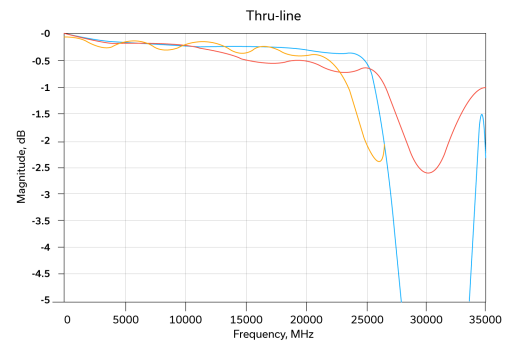
Built with rugged LTCC construction and wraparound terminations, these parts are well suited to the rigors of hand soldering when in the experimental phase, or reflow operations in production.
Preserving a thru line in a circuit where a filter might go allows the designer to observe system performance without any signal conditioning in order to determine precisely how much suppression is required from the desired filter. Traditionally, this was often accomplished by cutting the center conductor (50Ω trace) on the circuit board and installing a section of copper ribbon to bridge the gap. Having the ability to insert a thru line block with a whole library of LTCC filters for drop-in replacement is a breakthrough, saving time and significantly simplifying the design and test processes.
Use Cases
LO Harmonic Filter
Figure 2 shows a notional Mini-Circuits receive-side LO chain, which comprises an LO, multiplier, filter and amplifier. A thru line in lieu of the LO bandpass filter will help the designer determine the suppression necessary for the subharmonics and undesired harmonics since these signals will pass through the LO amplifier unfiltered. Additionally, the designer can examine the net effect on the desired harmonic level when passing unfiltered LO-related signals through the amplifier.
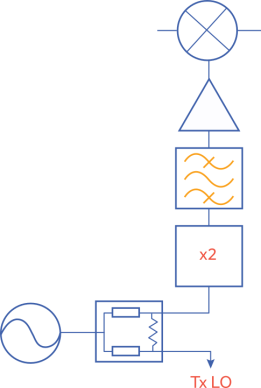
RF Preselector
Figure 3 is an LTCC BPF utilized as a preselector. Replacing the input BPF/preselector with a thru line and utilizing high-level interferers near the carrier enables the designer to examine the desensitization effect on the receiver LNA, and to ensure sufficient design margin is incorporated into the design when reinserting the LTCC BPF/preselector.
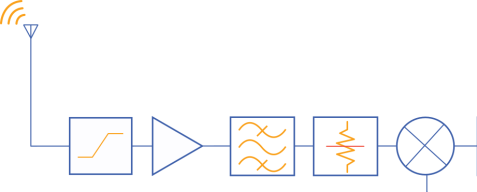
IF Filter
Finally, analysis of the IF BPF and the circuitry which follows is shown in Figure 4, and is perhaps the most complex of all the analyses that can be performed by inserting a thru line as a placeholder for a BPF. The previous signals such as the LO subharmonics/harmonics and receiver interferers that are now sufficiently suppressed by LTCC filters, are still incident upon the mixer at some level. The mixer has its own characteristic spur profile as well for any given range of RF and IF frequencies at a fixed LO frequency. Often shown graphically in the mixer spur chart, it is incumbent upon the designer to not only understand these spurs, but to suppress them adequately prior to amplification and digitization. The insertion of a thru line for the IF BPF combined with the utilization of a spectrum analyzer-based ATE setup to test for mixer spurs enables the designer to pinpoint the amount of spur suppression required.
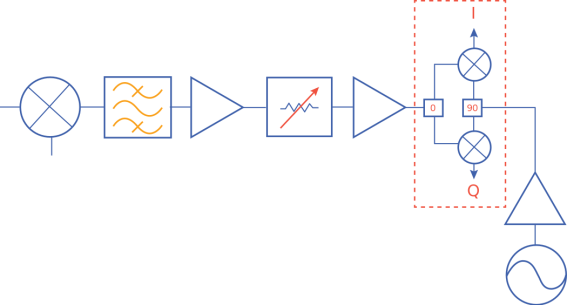
All Thru!
Mini-Circuits has developed three LTCC thru lines exhibiting excellent frequency response to 20 GHz that are compatible with the most common LTCC filter footprints. The TPCW-203+, TPCG-203+ and TPCN-203+ thru lines can be inserted in lieu of an RF preselector, LO harmonic filter or an IF filter in order to determine the level of suppression needed from a filter for drop-in replacement. Mini-Circuits’ industry-leading portfolio comprising hundreds of low pass, high pass, and bandpass filters and diplexers matching these footprints ensures both design flexibility and drop-in compatibility. Once the designer knows the required filter parameters, we usually have a suitable filter in stock. If not, we can most often design one. Mini-Circuits’ TP-family of thru lines is just as rugged and robust as the rest of its LTCC device lineup, able to withstand reflow operations and tough environmental requirements including wide temperature extremes. Check out the full Mini-Circuits lineup of thru lines here.


